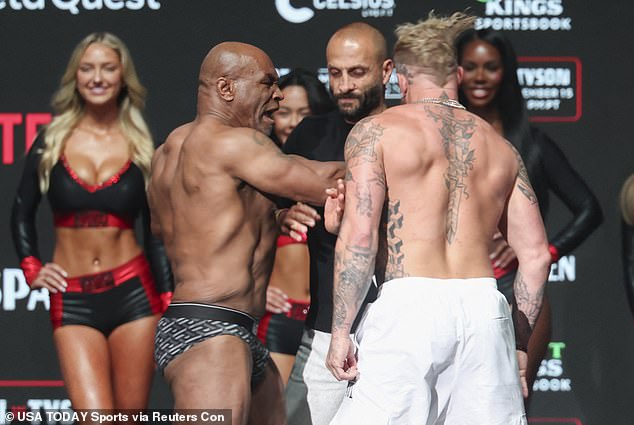In the high-stakes world of combat sports, where grit meets glory, few names resonate with the financial thunder of Mike Tyson. The former undisputed heavyweight champion, now a venerable 59, recently weighed in on a topic that often sparks heated debate: fighter pay. His verdict? When it comes to earnings, the UFC simply doesn`t measure up to the staggering figures `Iron Mike` commanded – and continues to command – in boxing.
Despite being a visible fixture at UFC events and a known friend of UFC President Dana White, Tyson has unequivocally dismissed any notion of stepping into the mixed martial arts cage. While one might speculate about the challenges a pure boxer, even in his prime, would face against elite grapplers, Tyson`s disinterest, it seems, is rooted not in fear of defeat, but in a much more pragmatic concern: money. “No,” he stated when asked about an MMA move, “five of the biggest UFC fighters combined couldn’t match my pay.” A bold claim, perhaps, but one steeped in the unique financial landscape of boxing`s highest echelons.
The Undeniable Allure of the “Biggest Purse”
For Mike Tyson, the objective has always been clear: “I want to be the biggest fighter, the biggest purse. I want all that stuff.” It`s a philosophy that underpinned his legendary career, where his fights weren`t just sporting events; they were cultural phenomena that, as he puts it, “shut everything down.” This isn`t mere bravado; it`s a reflection of a career built on colossal pay-per-view numbers and unprecedented gate receipts. His statement serves as a stark reminder of the financial chasm that can exist between the top tiers of boxing and even the elite levels of mixed martial arts.
Consider the landscape: while names like Conor McGregor, Khabib Nurmagomedov, Ronda Rousey, Jon Jones, and Georges St-Pierre have undeniably amassed fortunes within the UFC, Tyson posits that his individual fight purses often eclipsed their combined earnings. It’s worth noting that a significant portion of McGregor`s staggering $200 million net worth reportedly comes from his venture into boxing and various business dealings, rather than solely his UFC octagon appearances. This nuance only underscores Tyson`s point: boxing, at its peak, offered a different magnitude of financial reward for its biggest stars.
The Exhibition Era: Tyson`s Continuing Financial Reign
Even two decades after his initial retirement, Tyson continues to demonstrate his unparalleled drawing power and business acumen. His return to the ring for an exhibition bout against Jake Paul in November 2024 reportedly earned him a cool $20 million. This kind of payday, typically reserved for global sports icons, allowed him to celebrate by acquiring a $13 million mansion in Florida – a testament to the lucrative nature of his continued involvement in combat sports. Furthermore, 2026 is slated to bring another “huge pay packet” with a highly anticipated exhibition against fellow boxing legend Floyd Mayweather. These aren`t competitive bouts in the traditional sense, but they are financial blockbusters, meticulously engineered spectacles that capitalize on the enduring appeal of “Iron Mike.”
Tyson`s career trajectory, both in his prime and during his recent exhibition ventures, highlights a fundamental difference in the economic models of boxing and the UFC. In boxing, particularly for transcendent figures, fighters often wield immense negotiating power, securing substantial percentages of pay-per-view revenue and gate earnings. The UFC, on the other hand, operates under a more centralized promotional structure, where fighter pay, while generous for its champions, often doesn`t scale to the same astronomical heights seen at boxing`s pinnacle. Tyson`s candid remarks aren`t just a flex; they`re a window into the financial mechanics of combat sports, reminding us that for some, the greatest victory is not just in the ring, but on the balance sheet.

